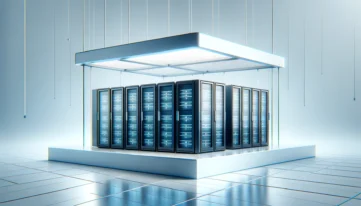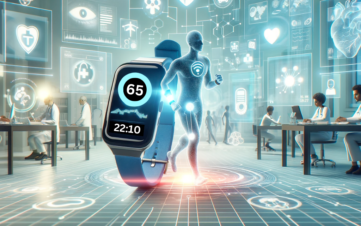Industry 4.0, also known as the Fourth Industrial Revolution, has significantly altered the way in which industries function. It is characterized by the incorporation of advanced technologies into industrial processes, such as the Internet of Things (IoT), artificial intelligence (AI), robotics, and big data analytics. IoT plays a crucial role in enabling remote monitoring and maintenance of equipment and systems, thereby further revolutionizing contemporary industries. Remote monitoring and maintenance are essential in today’s competitive business environment, as they enable businesses to increase operational efficiency, decrease downtime, and reduce costs. By utilizing IoT devices and systems, businesses are able to keep a close eye on their assets, machinery, and processes in real time, enabling more informed decisions and timely interventions.
In this blog post, we will explore the key components of IoT-based remote monitoring and maintenance systems, discuss their benefits in the context of Industry 4.0, and provide real-world examples and use cases. We will also address the challenges in implementing these solutions and take a look at the future of remote monitoring and maintenance in Industry 4.0.
Key Components of IoT-based Remote Monitoring and Maintenance Systems
IoT-based remote monitoring and maintenance systems consist of several interconnected components working in harmony to collect, transmit, analyze, and visualize data. These components are essential in ensuring the seamless functioning of an IoT-driven remote monitoring system. Let’s take a closer look at each of them:
- Sensors and actuators
Sensors are essential to remote monitoring and maintenance systems, as they collect data from a variety of sources, such as equipment, the environment, and processes. These sensors can measure a variety of parameters, including temperature, pressure, vibration, and humidity. Actuators, on the other hand, adjust a valve, switch a pump, or control a motor based on data received from sensors.
- Connectivity and communication protocols
Connectivity is essential for IoT-based remote monitoring systems because it enables the communication between devices and the central system. Multiple communication protocols, including Wi-Fi, Bluetooth, Zigbee, and cellular networks such as 4G and 5G, are used to transmit data. The choice of connectivity solution is determined by range, bandwidth, power consumption, and application-specific requirements.
- IoT platforms and data management
Platforms for the IoT serve as the backbone of remote monitoring and maintenance systems because they facilitate the collection, storage, and processing of data. These platforms offer a centralized dashboard for controlling actuators, analyzing data, and managing devices. Data management is essential in IoT systems because it ensures the proper handling of large volumes of data generated by sensors, allowing for real-time decision-making and effective maintenance strategies.
- Data analytics and visualization
In remote monitoring and maintenance systems, data analytics tools are essential because they transform raw data into actionable insights. It is possible to identify patterns, detect anomalies, and predict equipment failures using advanced analytics techniques such as machine learning and artificial intelligence. Dashboards and charts are examples of visualization tools that help present data in an easily digestible format, allowing operators to monitor equipment performance and make informed decisions.
- Security and privacy considerations
As IoT systems generate and process vast quantities of data, ensuring the security and confidentiality of this data is of the utmost importance. To protect sensitive data and prevent unauthorized access, stringent security measures, such as encryption, authentication, and access control, must be implemented. In addition to complying with data privacy regulations, organizations must ensure that the collected data is used responsibly and ethically.
Benefits of Remote Monitoring and Maintenance in Industry 4.0
IoT-based remote monitoring and maintenance systems in Industry 4.0 provide several benefits, such as improved operational efficiency, reduced costs, and enhanced competitiveness. Some of the key advantages are:
- Real-time monitoring detects inefficiencies, allowing operators to optimize operations and increase productivity.
- Predictive maintenance schedules maintenance activities based on sensor data to prevent unexpected downtime, reduce costs, and extend equipment life.
- Continuous monitoring ensures consistent product quality, reduces waste, and prevents downtime.
- Worker safety is enhanced by reducing manual inspections and monitoring hazardous conditions.
- IoT-based remote monitoring systems provide flexibility for changing business needs and scaling operations, enabling companies to stay agile and responsive to market demands.

Source: Image by jcomp on Freepik
By adopting IoT-based remote monitoring and maintenance solutions, organizations can achieve significant benefits, improving efficiency, reducing costs, and gaining a competitive advantage in the marketplace.
Real-World Examples and Use Cases
IoT-based remote monitoring and maintenance systems are versatile and effective solutions that have been applied in various industries. Here are some real-world use cases that showcase their impact:
- In manufacturing, smart factories can use sensors to remotely monitor critical equipment, detect potential failures, and perform timely maintenance. This leads to reduced downtime, improved productivity, and enhanced product quality.
- The energy sector, particularly renewable energy, can benefit significantly from remote monitoring and maintenance solutions. For example, solar and wind farms can use IoT devices to monitor the performance of individual panels or turbines, enabling operators to identify underperforming assets and schedule maintenance activities.
- Logistics and supply chain management can be revolutionized by providing real-time visibility into the location and status of assets, vehicles, and products. Sensors can track temperature, humidity, and shock levels during transportation, ensuring that products arrive in optimal condition.
- Smart farming systems can employ sensors to monitor soil moisture, nutrient levels, and weather conditions, allowing farmers to optimize irrigation and fertilizer application.
IoT-based remote monitoring and maintenance systems can enhance operational efficiency, reduce costs, and keep organizations competitive in the rapidly evolving landscape of Industry 4.0.
Overcoming Challenges in Implementing Remote Monitoring and Maintenance Solutions
Although IoT-based remote monitoring and maintenance systems have numerous benefits, their implementation can pose challenges. Businesses can overcome these challenges and enjoy the rewards by taking the following steps:

Source: Image by usertrmk on Freepik
- Adopt standardized communication protocols and invest in IoT gateways to ensure seamless connectivity between different devices and systems. Choosing an IoT platform that supports a wide range of devices and protocols can also help mitigate interoperability issues.
- Implement robust security measures, including encryption, secure authentication, and regular security updates, to protect vast amounts of generated data from unauthorized access and breaches. Staff training on cybersecurity best practices and the development of a comprehensive security policy can help maintain a strong security posture.
- Develop a clear roadmap for IoT deployment, outlining goals, timelines, and required resources. Collaboration with experienced IoT solution providers and consultants can also help navigate the complexities and ensure successful implementation.
- Invest in employee training and development programs for areas such as IoT, data analytics, and cybersecurity. Partnering with educational institutions and offering apprenticeship programs can also help in building a talent pipeline for the future.
By addressing these challenges, organizations can successfully implement IoT-based remote monitoring and maintenance solutions and unlock the full potential of Industry 4.0.
The Future of Remote Monitoring and Maintenance in Industry 4.0
As Industry 4.0 evolves, remote monitoring and maintenance solutions will become more sophisticated, using advanced technologies to improve efficiency and reduce costs. Here are some trends shaping the future of remote monitoring and maintenance in Industry 4.0:
- AI and machine learning will enable better analytics, predicting equipment failures and optimizing maintenance strategies to reduce downtime and costs.
- 5G networks will improve IoT-based remote monitoring and maintenance solutions, allowing more data transmission, device deployment, and advanced applications such as AR and VR.
- AR and VR technologies will revolutionize remote maintenance by providing immersive, interactive experiences for technicians to diagnose and solve problems more efficiently.
- Digital twins can help organizations predict potential failures, optimize maintenance schedules, and improve overall asset performance.
By adopting cutting-edge IoT solutions, organizations can gain a competitive edge in the rapidly evolving industrial landscape.
IoT-powered remote monitoring and maintenance solutions are crucial to the evolution of Industry 4.0, providing operational efficiency, cost reduction, improved product quality, enhanced worker safety, and scalability across industries. Despite implementation challenges, addressing issues such as connectivity, data security, complexity, and workforce skills can ensure successful deployment. The integration of advanced technologies like AI, 5G, AR/VR, and digital twins will also shape the future of remote monitoring and maintenance, driving innovation and efficiency. By embracing IoT-based solutions, organizations can stay competitive in the industrial landscape.










